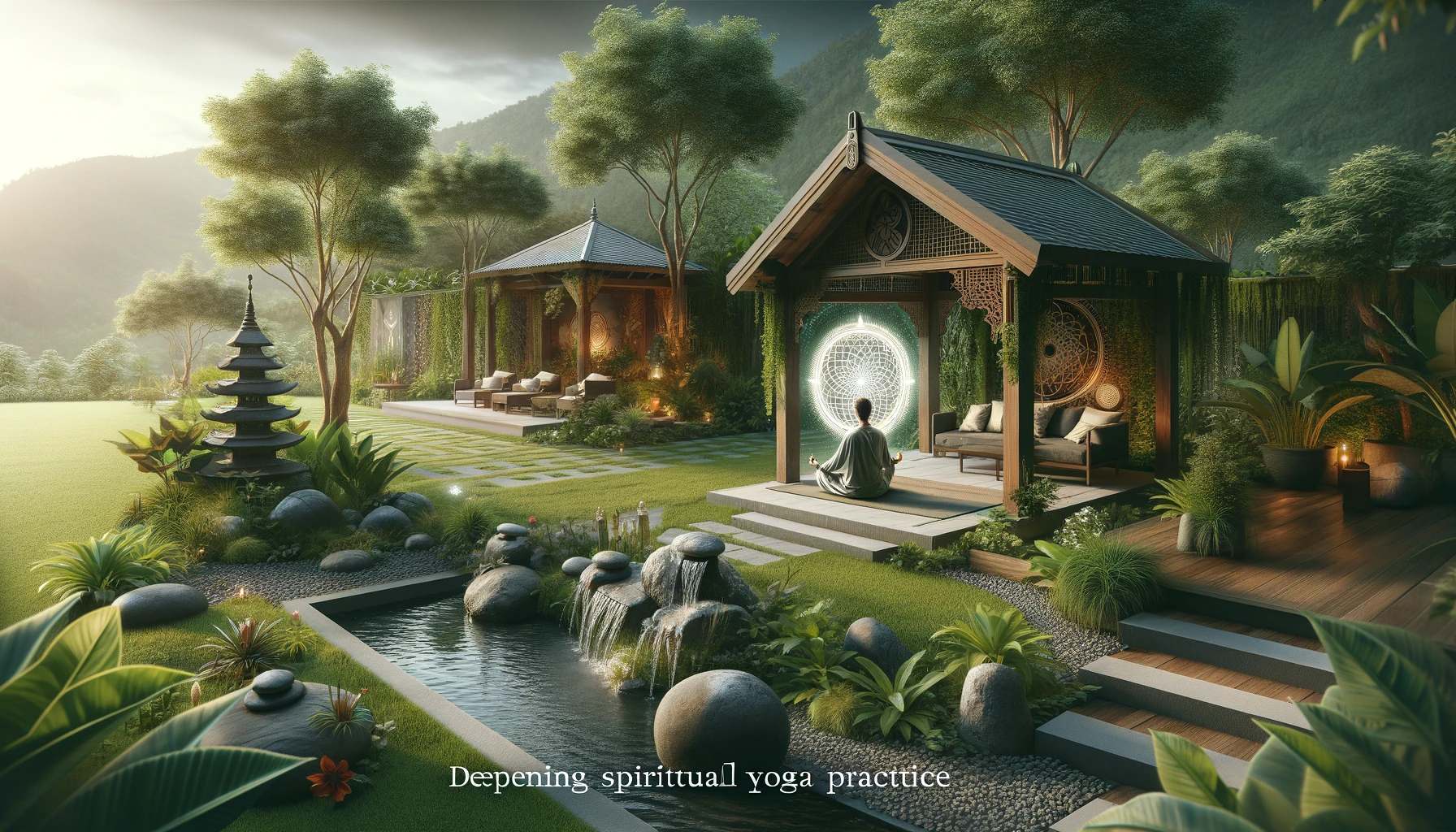Most individuals are familiar with yoga as a physical practice involving postures and breathing techniques. However, beyond the physical benefits lies a deeper, more profound aspect of yoga that focuses on spiritual growth and self-discovery. Cultivating a spiritual practice through yoga involves exploring the depths of one’s consciousness and connecting with the divine within. In this blog post, we will explore into the transformative power of yoga beyond the mat and uncover how it can nurture a deeper sense of self-awareness and inner peace. Join us on this journey of self-exploration and spiritual awakening through the practice of yoga.
Key Takeaways:
- Yoga is more than just physical exercise: The practice of yoga extends beyond the physical postures to include spiritual and mental components.
- Cultivating a spiritual practice is imperative: By incorporating elements like meditation, breathwork, and mindfulness, practitioners can deepen their connection to the spiritual aspects of yoga.
- Intention setting is important: Setting intentions before starting a yoga practice can help focus the mind and align actions with spiritual goals.
- Self-reflection is a key part of the practice: Taking time to reflect on one’s thoughts, emotions, and actions can lead to personal growth and spiritual development.
- Living yoga off the mat is transformative: Integrating the principles of yoga into daily life can lead to greater peace, balance, and spiritual fulfillment.
Embodied Practice and Mindful Awareness
The Asanas: More Than Physical Postures
Some may view yoga as simply a physical practice focused on achieving flexibility and strength. However, awareness of the body and mindfulness are crucial components that elevate the asanas beyond mere physical postures. Each pose is an opportunity to tune into the present moment, cultivate a deeper connection with the self, and transcend the limitations of the ego.
Pranayama: Breathing as a Gateway to Spiritual Awareness
Some overlook the significance of the breath in yoga practice, seeing it as merely a physiological function. But awareness of the breath through pranayama techniques can serve as a gateway to spiritual awareness. By directing and regulating the breath, one can harness vital energy (prana) to quiet the mind, increase mental clarity, and deepen the spiritual experience.
Pranayama involves various breathing exercises that not only oxygenate the body but also calm the nervous system and support overall well-being. Through focused practice of pranayama, practitioners can access heightened states of consciousness, release energetic blockages, and cultivate a more profound connection to the divine essence within.

The Philosophical Foundations of Yoga
Exploring the Yoga Sutras
It is imperative to investigate into the ancient text of the Yoga Sutras attributed to the sage Patanjali to understand the philosophical underpinnings of yoga. These sutras provide guidance on the practice of yoga and offer insights into the nature of the mind, the ego, and the path to spiritual realization.
Integrating the Eight Limbs into Daily Life
Into our modern lives, the integration of the Eight Limbs of Yoga offers a comprehensive roadmap for spiritual growth and self-realization. By applying the principles of yamas (restraints) and niyamas (observances) in our daily routines, we can cultivate greater awareness, compassion, and integrity in our interactions.
The practice of asanas (physical postures) and pranayama (breath control) helps to develop strength, flexibility, and mindfulness, preparing the body and mind for the deeper practices of concentration, meditation, and Samadhi (absorption). By incorporating these aspects into our daily lives, we can experience profound transformations and a deeper connection to our true selves.
Meditation: Deepening the Inner Connection
Dhyana and the Role of Meditation in Spirituality
To truly understand the essence of spirituality, one must probe into the depths of dhyana, or meditation. This ancient practice holds the key to unlocking the innermost realms of the self, facilitating a profound connection with the universe at large. In the pursuit of spiritual growth, meditation plays a pivotal role in cultivating awareness, stillness, and a profound sense of oneness with all that exists.
Techniques and Traditions – Beyond a Singular Path
As far as meditation, there is a vast array of techniques and traditions that span across different cultures and belief systems. From mindfulness meditation to transcendental meditation, each practice offers a unique approach to deepening one’s spiritual journey. Embracing a diverse range of techniques can enrich the meditative experience and broaden one’s perspective on spirituality.
Dhyana, or meditation, is not confined to a singular path or technique. By exploring various meditation practices, individuals can tap into different aspects of their consciousness and uncover new dimensions of their spiritual being. The beauty of dhyana lies in its adaptability and universality, making it a potent tool for spiritual growth and self-discovery.
The Science of Spirituality
Investigating Consciousness Through the Lens of Yoga
After millennia of introspection and observation, yogic philosophy offers profound insights into the nature of consciousness. Yoga teaches that consciousness is not limited to the physical body but is a universal force that pervades all existence. By delving into the depths of our inner being through practices like meditation and mindfulness, practitioners can directly experience this transcendent aspect of themselves.
The Neurophysiology of Meditation and Spiritual Experiences
To understand the profound effects of meditation and spiritual experiences on the brain, we must turn to the field of neurophysiology. Research has shown that these practices can induce measurable changes in brain activity, leading to enhanced emotional regulation, increased focus, and decreased stress levels. These insights shed light on how ancient spiritual practices like yoga can have tangible benefits for mental health and well-being.
Yoga has been found to activate regions of the brain associated with self-awareness and empathy, while also quieting the default mode network responsible for mind-wandering and self-referential thoughts. This unique combination of activation and deactivation in the brain during yogic practices can lead to a heightened sense of connection with oneself, others, and the universe at large.

Living Yoga: Everyday as a Spiritual Practice
Karma Yoga – Service and Action in the World
Keep in mind that Karma Yoga is the path of selfless service and action in the world. It teaches us to act without attachment to the fruits of our actions, focusing on the intention behind our deeds rather than the outcome. By serving others and performing our duties with dedication, we cultivate a sense of humility and interconnectedness with all beings.
Bhakti Yoga – Devotion and the Heart of Spiritual Practice
On the other hand, Bhakti Yoga is centered around devotion and love for the divine. It emphasizes surrendering the ego and cultivating a deep emotional connection with a higher power. Through practices like chanting, prayer, and rituals, practitioners of Bhakti Yoga seek to purify the heart and cultivate a sense of unconditional love and devotion towards the divine.
For instance, Bhakti Yoga can be a powerful tool for cultivating compassion and empathy towards others. By focusing on developing a loving relationship with the divine, practitioners learn to see the divine spark in all beings and treat them with kindness and respect.
Summing up
From above the mat to within the depths of the spiritual journey, the exploration of yoga as a practice extends beyond the physical postures to encompass a profound connection with the self and the universe. By delving into the realms of mindfulness, meditation, and intention setting, individuals can cultivate a spiritual practice that goes beyond the boundaries of the mat and permeates every aspect of their lives. Through this deep investigate the spiritual dimensions of yoga, one can unlock a greater sense of purpose, self-awareness, and interconnectedness with the world around them. As we continue to unravel the mysteries of the universe, yoga serves as a guiding light in the quest for understanding and enlightenment.
FAQ
Q: What is the purpose of yoga beyond the mat?
A: The purpose of yoga beyond the mat is to cultivate a spiritual practice that goes beyond the physical postures and focuses on personal growth and self-realization.
Q: How is yoga beyond the mat different from traditional yoga practice?
A: Yoga beyond the mat emphasizes the integration of yoga principles into daily life, promoting mindfulness, compassion, and inner peace in all aspects of existence.
Q: What are some ways to incorporate yoga beyond the mat into daily routine?
A: Some ways to incorporate yoga beyond the mat into daily routine include practicing mindfulness in everyday activities, developing a meditation practice, and cultivating a sense of gratitude and self-awareness.
Q: How can yoga beyond the mat help in spiritual growth?
A: Yoga beyond the mat can help in spiritual growth by deepening one’s connection to the self and others, fostering a sense of interconnectedness and oneness with the universe.
Q: What are the benefits of cultivating a spiritual practice through yoga beyond the mat?
A: The benefits of cultivating a spiritual practice through yoga beyond the mat include increased self-awareness, emotional balance, inner peace, and a deeper understanding of one’s purpose in life.

